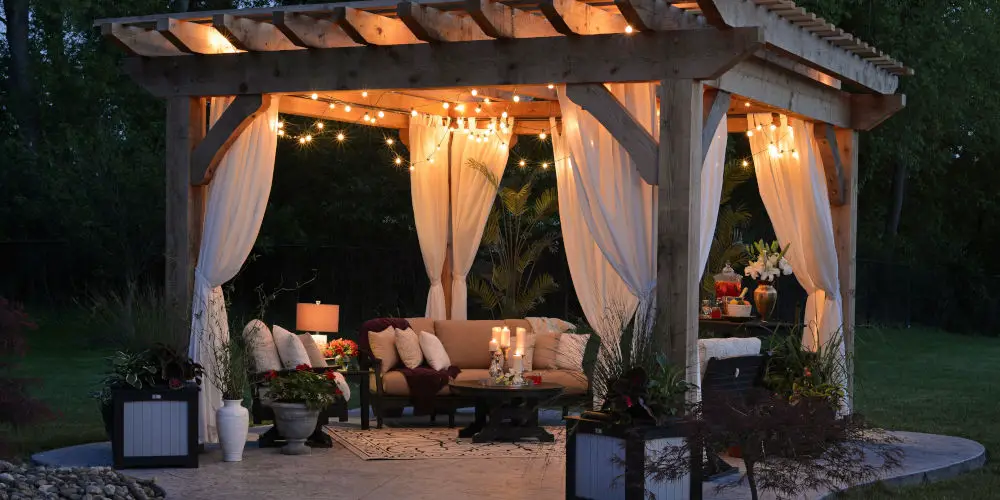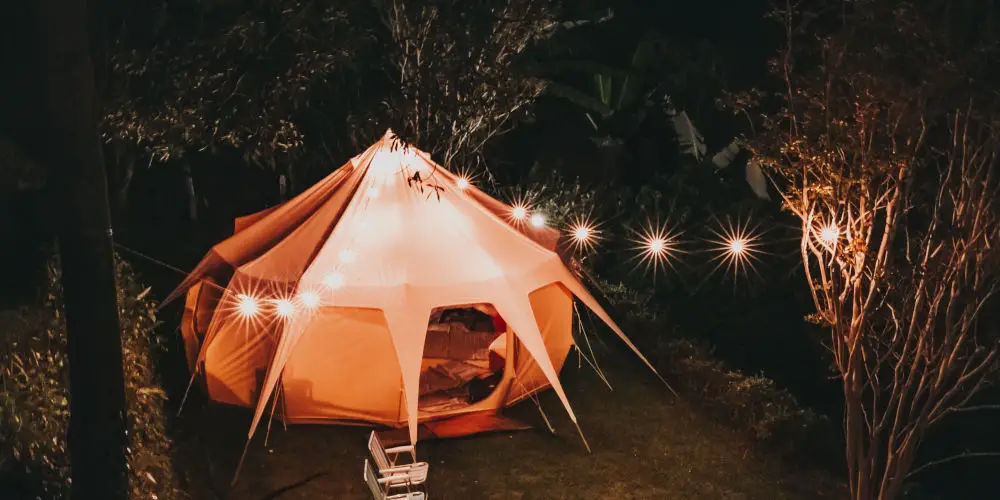What smart outdoor lights are best for your garden?

After automating inside your home, you wonder what to do next. For some, the system isn’t complete until they’ve added connected smart outdoor lights, smart speakers and swimming pool automation!
Thankfully, the market for smart outdoor lighting has massively evolved over the last few years with many brands, including Philips Hues offering a range of options.
While smart security cameras and doorbells led the way, many smart outdoor lights are now available, catering to all budgets, requirements and garden designs.
Let’s explore what external lighting options are available and how they can help us create a nighttime garden perfect for relaxing and entertaining.
What options for smart outdoor lights do we have?
Depending on who you ask, you’ll hear different explanations of what they consider to be smart outdoor lights. To make it simpler, here are the major groups you can use in your garden to make it smarter.
Change to smart light switches
You could change your internal wiring and upgrade to smart light switches. While more involved than swapping bulbs, it does offer more flexibility and is cheaper.
Add smart outdoor lighting fixtures
If you don’t fancy swapping bulbs or want more lighting in your garden, you’ll want to add smart outdoor lighting fixtures. These typically work with standard bulbs, allowing you to marry technology with convenience.
You can also buy bespoke outdoor options that integrate LED lighting to create unique lighting that bulbs can’t do.

How can I add smart lighting to my garden?
While this article isn’t a guide to garden lighting ideas, it’s worth understanding the types of outdoor lights we can use and how.
Floodlights
Typically, floodlights are mains powered and provide bright lighting over a large area. You can buy both white or coloured, wall-mounted or garden varieties.
Spotlights
As the opposite of floodlights, spotlights are ideal for highlighting garden features and adding ambience. They can be battery or mains powered and vary in brightness. While usually freestanding, some can be wall-mounted and act like downlights.
Path lighting
These freestanding lights are ideal for lighting paved areas and walkways, providing a minimum lighting level, ideal for nighttime ambience. Typically, these produce a white colour light, but some colours are available. Some also make it easy to adjust the brightness.
String/Strip lights
As decorative lighting options, they come in various forms; rope lights, light strips, or strings of individual lights.
What are the benefits of smart outdoor lights?
If you’re already using a home automation system, it’s a no brainer to expand this to incorporate your garden or outdoor space. However, if you’re not and are just starting to explore smart homes, you might need convincing.
You could start with something simple such as a few bulbs controlled by Alexa or Google Home. Neither requires a hub, meaning you can get set up and running in minutes. However, you could invest in a heavy-duty system like Fibaro or Lightwave, both offer an extensive range of features.
It’s easy to think of home automation as a vanity solution that doesn’t do much. And yet you’d be mistaken. Automating your outdoor lights means better control as you can use your phone to operate them from anywhere with Wi-Fi.
But, you can preset them to mimic your behaviour when away, making your home safer.
You can also create present scenes, allowing you to change the mood with a single button. For example, you could set a bunch of smart outdoor lights to various preset colours, turn on a water feature and start a playlist on your outdoor speakers.
Another more practical use is using motion sensors on the front gates to automatically trigger certain lights and start recording footage on your security cameras. You can even set the system up to send you a notification when the sensor on the gate is triggered.

Is it easy to install smart outdoor lighting?
While this depends on the type of light you buy, the majority of garden lighting is low voltage. Typically, they use a 12V or 24V power and a power pack of some sort. These simply plug into an outdoor outlet, allowing you to run the low voltage cable to where you need it.
More permanent fixtures will need hard wiring, either in the ground or on the wall. These will likely require additional work to install mounting brackets or run electrical cables. If you feel confident with your DIY skills, you’ll be fine. Otherwise, it’s best to hire an electrician.
Which smart outdoor lighting is best for a garden?
For most gardens, you only really need path lights and spotlights. These both provide ambient illumination and can highlight features of interest. Using these together is a winning combination.
You can use floodlights, but they are harder to optimise for smaller spaces. With floodlights, you could feel exposed and like the neighbours are watching. So, you might prefer to use a mix of path lights and spotlights to create a more subtle effect.
Of course, the combinations you use would depend on your layout, objectives, and power outlet availability.

How do smart outdoor lights work?
The majority of smart outdoor lights require continuous mains power to keep them powered and communicating with your smart home system and enable voice control. Some are battery-powered, but these typically offer less brightness and require more maintenance to keep them working.
If you’re using Alexa or Google Assistant to control your smart outdoor lights, they’ll use Wi-Fi to communicate. Most rely on lower power mesh protocols like Zigbee or Z-Wave to provide fast, reliable control.
Where to start automating your outdoor lighting
When looking at smart outdoor lights, there are lots to consider. It’s not just a simple choice of adding any old lights. Start with your budget, requirements and desired outcomes. For most, using a Philips Hue system or pairing a few lights with Alexa will be ideal.
However, if you’re serious about home automation, you’ll want to invest in a Z-Wave or Zigbee system. These systems allow you the flexibility you need to automate your entire home without slowing your Wi-Fi connection.
If you’re able to install lights yourself, go for it. But you might want to work with an electrician to ensure they are correctly installed and work with your desired system.
When you’re up and running, you’ll be able to enjoy your garden or outdoor space for longer as you have the ideal lighting. Sounds like party time at yours!




